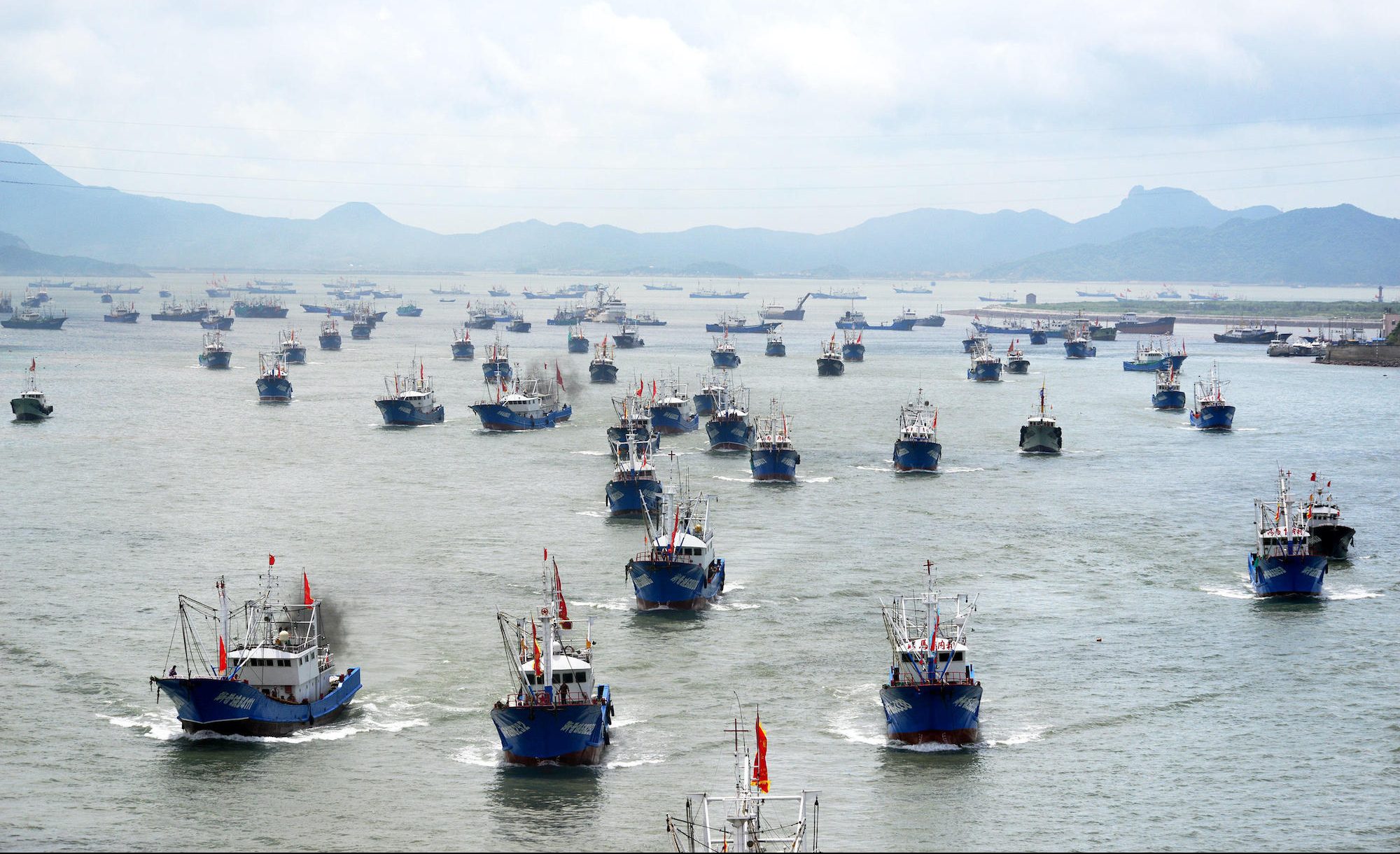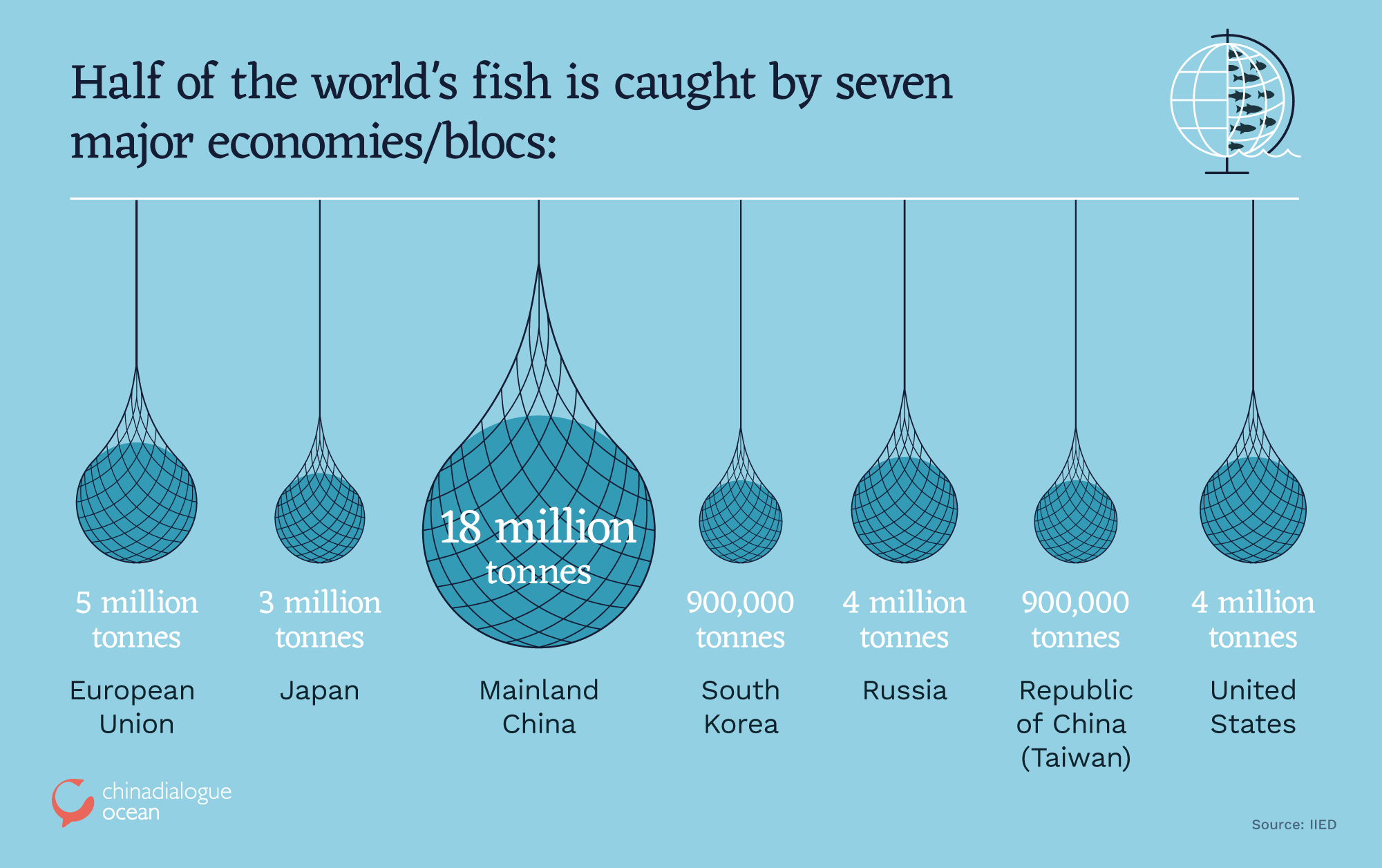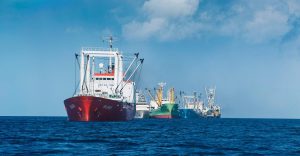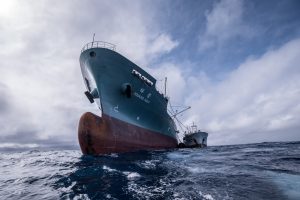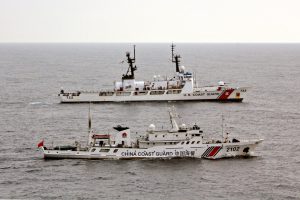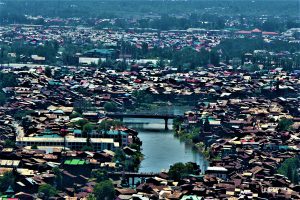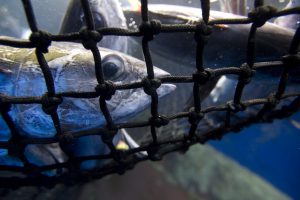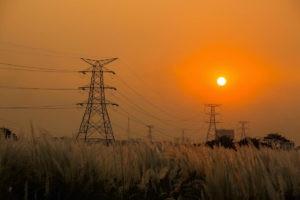Despite delays to World Trade Organization talks on fishing subsidies caused by coronavirus, a recent agreement to restart talks has renewed hopes of a deal by the end of the year. As a major fishing nation and provider of subsidies, China’s stance and policies at the talks will be crucial to unlocking an agreement. And with China’s 14th Five Year Plan period starting next year, this could pave the way to key reforms to its fishing subsidies.
Background to the WTO talks
The talks have gone back and forth for almost 20 years since the WTO first acknowledged that fishing subsidy reforms were needed in 2001. In 2015, the talks received new impetus from UN Sustainable Development Goal 14.6: “By 2020, prohibit certain forms of fisheries subsidies which contribute to overcapacity and overfishing, and eliminate subsidies that contribute to illegal, unreported and unregulated fishing, and refrain from introducing new such subsidies”.
An agreement was expected at the 12th WTO ministerial conference in Kazakhstan in June, but that meeting was cancelled due to the coronavirus. However, on 25 June, Santiago Wills, chair of the WTO Negotiating Group on Rules, and Columbia’s ambassador to the WTO, issued member states with a new draft agreement. Then, at a closed-door meeting on 21 July, representatives agreed to start “continuous negotiations” in September, with the aim of reaching agreement on reducing or eliminating fishing subsidies by the end of the year.
“This is the first time that WTO negotiations are about sustainability and that means that we have had to change our mindset a bit,” said Wills at an online seminar in May organised by UK thinktank Chatham House. “A lot of negotiators have experience with subsidies and their impact on trade, but what impact a subsidy has on sustainability is a new issue for us.”
‘Special and differential treatment’
One issue that is complicating the talks is arrangements for “special and differential treatment” for developing countries. It is common in WTO trade rules for differences in development to allow for significant divergences between subsidy regimes.
Han Yang, head of the research department at the State Council Development Research Centre’s Rural Economy Institute, has noted that developing nations typically subsidise fuel, shipbuilding, refrigeration, fishing gear, safety equipment, infrastructure and fisheries management measures. Whereas developed nations only subsidise “public services” such as infrastructure, research and fisheries management.
According to the UN Food and Agriculture Organization, developing nations are home to 1.16 billion people reliant on commercial fishing for their livelihoods. Ninety percent of them are reliant on small-scale fishing so changes in subsidies could have major implications for global food security and livelihoods in low-income nations.
While in WTO methodology the “least-developed” countries are defined by World Bank criteria and automatically treated as developing countries, WTO members can also self-designate as developing countries to claim benefits under special and differential treatment that are unavailable to developed countries.
Currently, China self-designates as a developing country in WTO talks although it is the world’s largest fish producer and a major exporter. However, observers have warned that maintaining this stance will worsen disagreements between China and the US during the talks. The US has long been unhappy with the WTO’s differential treatment for developing nations and consistently calls for reform. In February, the Office of the US Trade Representative shortened its list of “developing economies”, with China among those removed.
China spends significant sums annually to support ocean fishing, including on fuel subsidies, which have been criticised for incentivising fishing regardless of the health of fish populations. China put in place a quantified target for limiting fuel subsidies in 2015 that applies to fishing in its own waters, but it’s unclear if its policy on distant-water fishing (DWF) will change.
In June last year, China proposed capping some subsidies that contribute to overcapacity and overfishing, with gradual reductions rather than an immediate ban, so “leaving room for sustainable social and economic development”. The proposal also called for special and differential treatment for developing and least-developed countries, with least-developed nations to be exempt from subsidy caps and reductions.
Developing and least-developed countries discussed special and differential treatment at a round of WTO talks last December. South Africa – speaking for African, Caribbean and Pacific nations – as well as Senegal – speaking for the least-developed countries – and India stressed that poorer countries should be exempt from subsidy bans, which should instead be targeted at large industrial fishing nations.
At the same talks, the US disagreed with exemptions for self-designated developing nations, emphasising that special and differential treatment should be specific to certain subsidies, or designed to help members fulfil the agreement.
China’s fuel subsidies
At the Chatham House seminar, Santiago Wills said that one reason the WTO talks have taken so long is a lack of transparency on subsidy data and difficulty comparing reports from different organisations. He indicated that it is impossible to assess the gravity of the problem without reliable subsidy data.
Last year, a team led by researchers from the University of British Columbia estimated that worldwide fishing subsidies totalled $35 billion in 2018, of which $22 billion was used to increase fishing capacity. These subsidies mainly include fuel subsidies, boat renovations and tax exemptions. The top five subsidisers – China, the EU, the US, South Korea and Japan – account for 58% of the global total.
Fuel subsidies are common among major fishing nations and acknowledged as harmful because they can contribute to overcapacity and deplete ocean resources. Globally, China pays the most in fuel subsidies. According to figures compiled by Greenpeace, by 2011 central government fuel subsidies had grown nine-fold since they started in 2006, contributing significantly to a boom in distant-water ship building.
China stopped publishing official fuel subsidy data in 2011. But the government spent 148.4 billion yuan (US$21 billion) on fuel subsidies for the fishing industry between 2006 and 2014, with annual spending reaching 24.2 billion yuan in 2014, according to Wei Decai, deputy professor at Hainan University’s School of Law, in his book Research on International Norms in Protection of Ocean Fisheries, published last October.
China is now cutting back on fuel subsidies for domestic fishing to rein in overcapacity, protect fishery resources and improve the structure of the industry. In 2015, the Ministry of Finance and the Ministry of Agriculture announced an aim of bringing spending on fuel subsidies for domestic fishing down to 40% of 2014 levels by 2019, while supporting a reduction in vessel numbers and the finding of alternative employment.
But making changes to fuel subsidies for the distant-water fleet is more complicated. China is a major distant-water player, with official figures released in March showing the country has over 170 firms and 2,600 vessels involved in the sector. Together, they produce 2 million tonnes of fish a year. Figures show that in 2018 the distant-water fleet accounted for 18.6% of China’s total ocean-going engine power. Development of this fleet affects people’s livelihoods and also involves strategic considerations such as the protection of China’s ocean rights.
If more scientific evidence shows there is little room for the distant-water industry to grow, government may take a more cautious approach to approving fuel subsidies
The 13th Five Year Plan included a target of stabilising distant-water vessel numbers below 3,000, with annual production of 2.3 million tonnes and no additional distant-water companies as compared to 2016. This means there is still room for growth on the figures released in March. And the government has not yet indicated any changes to distant-water fuel subsidies.
Wei Decai’s book points out that while China has many distant-water vessels, the technology and equipment they use lags far behind other countries with more developed fishing sectors. The expanding industry urgently needs government investment, and signing up to a WTO agreement on reducing subsidies will not help China upgrade its fish products, increase incomes, maintain the distant-water fishing industrial chain, and increase sales of Chinese marine products on the international market.
Wang Songlin, secretary general of the Qingdao Marine Conservation Society, says it is unlikely the subsidy will be cut soon, as there is still room for growth in the distant-water fishing sector.
“It is hard to say currently whether fuel subsidies will fall or be held at current levels once catch capacity reaches the upper limit,” said Wang. “But it is fishery resources which will determine what that upper limit is. If more scientific evidence shows there is little room for the distant-water industry to grow, government at all levels may take a more cautious approach to expanding capacity by approving fuel subsidies and boat construction.”
Fuzzy subsidies and partial reductions
Another problem hindering the talks is that the WTO has no specific rules for defining and categorising fishing subsidies, but only general subsidies rules, therefore countries take their own approach.
Professor Bian Yongmin of the University of International Business and Economics’ School of Law called on China to organise and categorise its subsidies back in 2011 in expectation that the WTO’s Agreement on Subsidies and Countervailing Measures would result in future restrictions on fishing subsidies. In particular, he recommended that China reduce or eliminate subsidies that distort markets or damage sustainability, adjust the types and structure of subsidies offered, and ensure that government support for the sector could legally continue.
But that process is not yet complete. In his book, Wei Decai notes that many types of spending on the fishery sector in China are described as subsidies in government documents and that the term is used too loosely and covers far more than the FAO or WTO definitions. Although China joined the WTO in 2001, it hasn’t categorised many fishing subsidies along WTO lines, making it hard to know which Chinese subsidies might be prohibited, or how much is spent on these. And there is no basis on which to categorise them according to scale or fishing methods used.
But China has not been idle. The WTO talks aim to ban subsidies which contribute to overfishing and illegal, unreported and unregulated (IUU) fishing. While China may be hesitant to cut capacity, it has been more proactive when it comes to tackling IUU fishing.
A revision of the Fisheries Law, due to be completed this year, legislates for a blacklist of distant-water fishing personnel. In 2018, the Ministry of Agriculture published a list of company officials and ship captains suspected of involvement in IUU fishing, with sanctions for serious cases including the removal of fuel subsidies or licences.
And last year the Ministry of Agriculture made clear it would work with other authorities to implement the UN’s Port State Measures Agreement (PSMA), which requires signatories to prevent vessels involved in IUU activity from using ports and selling their catch into local markets.
Zhou Wei, senior oceans campaigner with Greenpeace, said that there is less dispute over tackling IUU fishing when compared to overcapacity and overfishing, with a clearer route to improvements. The negative publicity associated with Chinese vessels that have been caught engaged in IUU activity, particularly in high seas near Galapagos in 2017, has motivated China to improve its oversight.
China is also removing subsidies for destructive and indiscriminate fishing gear and techniques, according to Wang Songlin. For example, from 2020 fuel subsidies were removed for pair bottom trawling, stow nets and Danish seine nets, a sign that subsidies are being retargeted.
As for how China will adjust its fishing subsidy regime, Wang Songlin hopes that more resources will be directed at improving statistics in the domestic fishing industry and expanding research into how fishing affects fish populations and the environment. He explained that basic data is essential for establishing management models for fishery resources and designing output-oriented management measures such as quota systems. “If China does reform fuel subsidies, this is where it could spend the money saved.”
